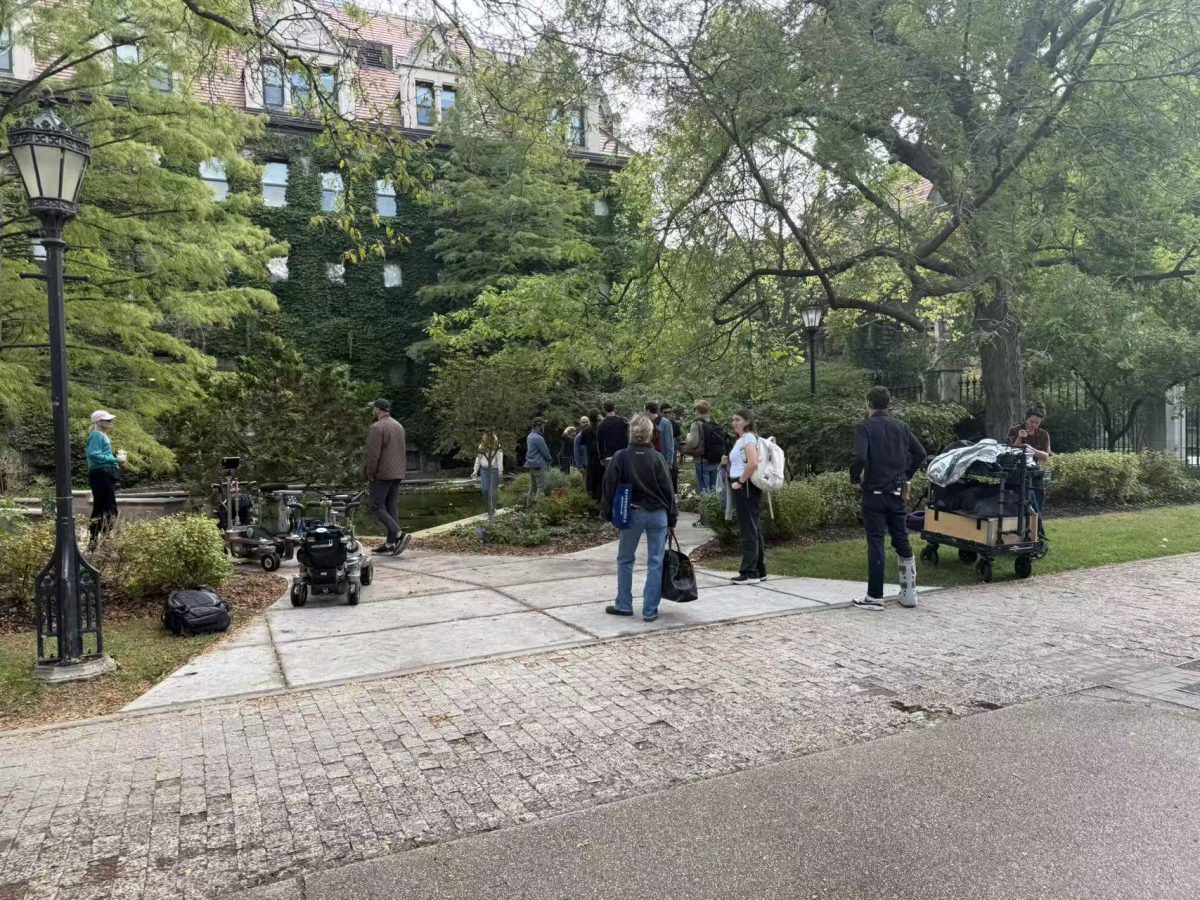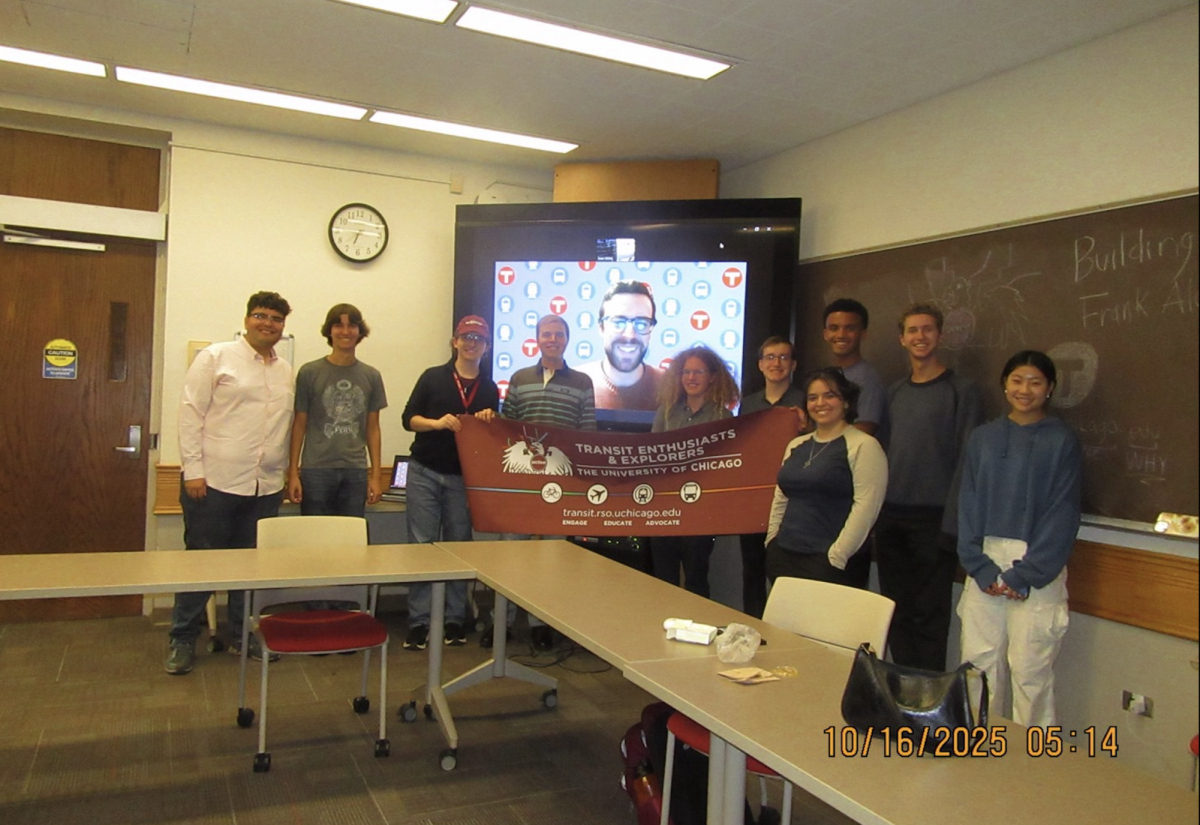[img id=”77367″ align=”alignleft”] In the prion lab deep within the maze of the U of C hospital complex, large plate-glass windows line the wall that separates the biohazard laboratory from the rest of the hospital.
Dr. James Mastrianni, who heads the research there, said the windows seemed like a good idea when he redesigned the lab several years ago. “That way, we could communicate visually in case of an accident,” he said.
It’s best to be prepared when you’re working with Creutzfeldt-Jakob Disease (CJD), part of a group of diseases whose best-known member is colloquially called “mad cow disease.”
Both CJD and mad cow are rare but incurable and invariably fatal neurological diseases. They’re part of a family called spongiform encephalopathies, so named because its victims’ hole-riddled brains at autopsy resemble a sponge. Mastrianni is one of only two doctors in the U.S. who specializes in treating live patients with CJD.
What sets CJD apart from all other known diseases is that it doesn’t seem to be caused by a virus or bacteria, but by a protein that has simply been misfolded. The rogue protein, called a prion, somehow causes the body’s other proteins to misfold, and deposits of these abnormal proteins build up in the brain and spinal cord. The bovine version is what causes mad cow disease, and since prions seem to jump across species fairly easily, a human eating prion-infected beef could become infected.
Mastrianni did post-doctoral work with Stanley Prusiner, the University of California–San Francisco researcher who first identified the infectious protein and coined the term prion, for proteinaceous infectious agent. (Mastrianni said Prusiner switched “proin” to “prion” because it sounds better.)
CJD sometimes runs in families, but more often it appears sporadically, striking patients in their 30s or later who have no family CJD history. This happenstance appearance is what Mastrianni studies: Why some people get CJD and most others don’t. “The idea is that maybe there’s a gene defect—an insertion or deletion—that predisposes the protein to misfold,” he said.
Mastrianni’s research deals with the disease’s propagation. “We’re interested in the conversion process, how the protein actually binds to a normal protein to convert and misfold it,” he said. “If we can identify the interface, maybe we can build a small molecule that would prevent conversion.”
This goal, which focuses on simply discovering how the disease spreads, reveals how truly mysterious prions remain. Some people infected with CJD come down with the disease right away, and other people go 20 or 30 years without showing symptoms. It’s unclear how proteins are triggered to misfold, or even what is that protein’s original function in the body.
The search for a drug to even slow the progression of the disease is important because nothing has worked so far. “There are no therapies,” Mastrianni said. “There’s nothing to offer families. But we’re hoping that if we have good preliminary data in a drug run with our mice, we can take it to the streets.”
But because prions are so dangerous, much of the work towards that drug has to take place in the biohazard level-three lab.
Biohazard levels are precaution requirements set by the U.S. Centers for Disease Control and Prevention to ensure labs are able to handle infectious or dangerous organisms. Level-two covers relatively mild diseases, like salmonella and measles, or those not easily spread through the air, like HIV. Level-three agents cause serious but treatable diseases: smallpox, malaria, and anthrax, for example. Last, and most dangerous, are biohazard level-four viruses and bacteria, which have no vaccines or treatment—Ebola virus, H5N1 bird flu, and bubonic plague-causing bacteria, among others.
Prions are classified as level two, but require level three laboratory practices. That means the lab is not allowed in a public area, so it can’t be close to a waiting room. It’s kept constantly locked, and there’s a special room, whose combination is held by only a few people, where infectious tissues are unpacked. The lab is under negative pressure: The air from the room has its own vent system, which comes out the roof of the hospital.
To enter the biosafety lab, you have to gown up, wear booties and a jumpsuit or plastic wrap, two pairs of gloves, and a facemask “for everything that could splash,” Mastrianni said. The mice infected with prions for his experiments have their own room separate from the hospital’s other mice.
Mastrianni and his assistants work with infectious brains, both human and animal, “which could infect you if you eat it or inhale it or inject it,” Mastrianni said. But because the disease is incurable, scientists can’t experiment to find out exactly how much prion will cause CJD in humans.
“This is why the techs go double-gloved—even if someone scrapes a needle across the glove, it will probably be stopped by the second glove,” Mastrianni said.
If Mastrianni wants even to send or receive samples of infected tissue from another researcher, he needs a USDA permit. “That’s trafficking of infectious parts,” he said.
“It’s a lot of work just to get an experiment done,” Mastrianni said. “But it’s very important.”
Mastrianni thinks CJD has similarities to other fatal, progressive disorders like Huntington’s and Parkinson’s diseases, which also affect the brain and are thought to be related to protein malfunction. “CJD is a rare and odd disease, but it could tell us a lot about neurodegenerative disease in general,” Mastrianni said. “That’s why it’s worth studying.”








